History of Traditional Chinese Clothing
Traditional Chinese clothing, also known as Hanfu, has a rich and fascinating history dating back thousands of years. Let’s delve into the evolution of this attire from ancient times to the present.
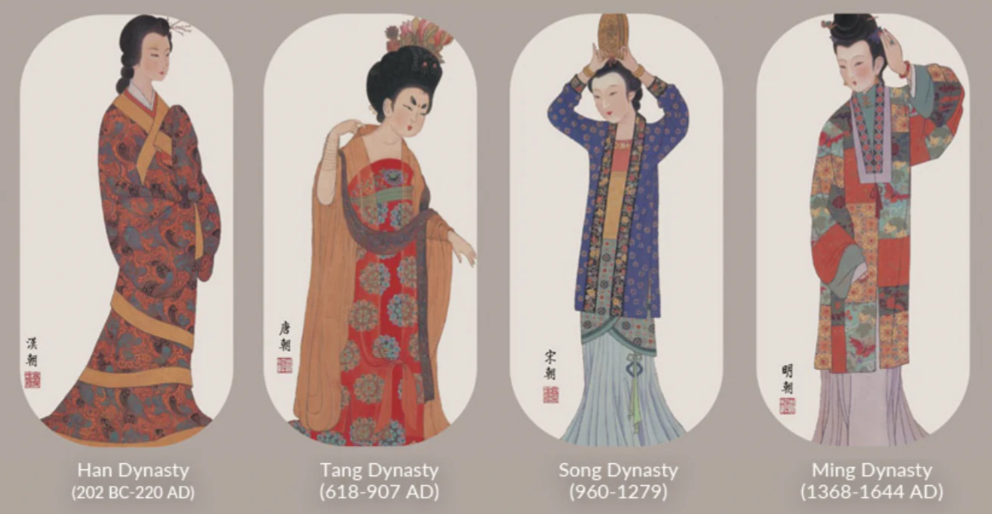
Ancient Origins (古代起源)
Chinese clothing has its roots in the Shang Dynasty (c. 1600–1046 BCE), with styles evolving over time.
Silk Production (丝绸生产)
Silk, a luxurious and highly prized fabric, played a pivotal role in early Chinese attire. The Silk Road facilitated its trade.
Dynastic Influence (朝代的影响)
Each dynasty brought its unique fashion trends. The Tang Dynasty (618–907 CE) favored loose, flowing robes, while the Ming Dynasty (1368–1644 CE) introduced the iconic Qipao.
Cultural Significance (文化意义)
Chinese clothing is deeply rooted in cultural symbolism. Colors like red symbolize good fortune, while dragons represent power and strength.
Influences from Neighboring Regions (邻国的影响)
Throughout history, interactions with neighboring regions like Mongolia and Central Asia influenced Chinese clothing styles and accessories.
Modern Revival (现代复兴)
In recent years, there has been a resurgence of interest in Hanfu, with designers blending traditional elements into modern fashion.
Conclusion (结论)
The history of traditional Chinese clothing is a tapestry woven with threads of culture, tradition, and innovation. From the ancient origins of silk production to the modern revival of Hanfu, this attire reflects the richness and diversity of Chinese history and culture.
Types of Traditional Chinese Attire
Traditional Chinese attire encompasses a wide array of clothing styles, each with its unique features and purposes. Let’s delve into some of the most notable types:
Hanfu (汉服)
Hanfu is the traditional clothing of the Han Chinese people. It dates back over 3,000 years and consists of several components:
- Ruqun (襦裙): Comprising an upper garment called ru and a lower skirt (qun), this style is elegant and timeless.
- Zhongyi (中衣): A type of robe often worn underneath the main clothing, providing additional warmth and comfort.
- Beizi (褙子): An outer garment like a short jacket or coat, sometimes adorned with intricate embroidery.
- Accessories: These include headdresses, belts, and various forms of jewelry, all playing a role in completing the Hanfu ensemble.
Qipao (旗袍)
Qipao, also known as the cheongsam, is a modernized variation of traditional Chinese clothing. Key features include:
- Form-fitting Design: It is a one-piece dress that hugs the body’s contours, showcasing elegance and grace.
- High Collar: The dress typically features a high, mandarin collar, which adds a touch of sophistication.
- Slit Skirt: A side slit in the skirt enhances ease of movement while maintaining modesty.
Gua (褂)
Gua is a traditional Chinese jacket, often worn by men. Key characteristics include:
- Mandarin Collar: It features a high, closed collar, adding a formal touch.
- Buttoned Closure: Gua typically has frog buttons, which are knotted loops, for fastening.
- Straight-cut: The jacket has a straight-cut design, which is both stylish and functional.
Robes (袍子)
Robes have been a symbol of authority and prestige in Chinese culture for centuries. Notable robe types include:
- Dragon Robe: These ornate robes, often adorned with dragon motifs, were reserved for emperors.
- Confucian Robe: Worn by scholars and officials, these robes featured distinctive square sleeves.
- Monk’s Robe: Used by Buddhist monks, these robes are simple and loose-fitting for ease of movement during meditation.
Distinctive Features and Purposes
- Elegance and Versatility: Traditional Chinese attire is known for its elegance and versatility, suitable for both everyday wear and formal occasions.
- Cultural Significance: Each type of attire carries cultural and historical significance, reflecting China’s rich heritage.
- Materials: These garments are often crafted from high-quality materials such as silk, brocade, and satin.
- Quality and Craftsmanship: The quality of traditional Chinese attire is a testament to meticulous craftsmanship.
- Cost and Price Range: Prices can vary widely based on the type, materials, and craftsmanship, ranging from affordable to high-end luxury.
- Advantages and Limitations: While these outfits are admired for their beauty and cultural value, they may not be the most practical choice for everyday wear due to their formality and intricate design.
In summary, traditional Chinese attire comprises a diverse range of clothing styles, each with its own history, purpose, and unique characteristics. These garments are not only a reflection of China’s rich cultural heritage but also an embodiment of timeless elegance and craftsmanship.
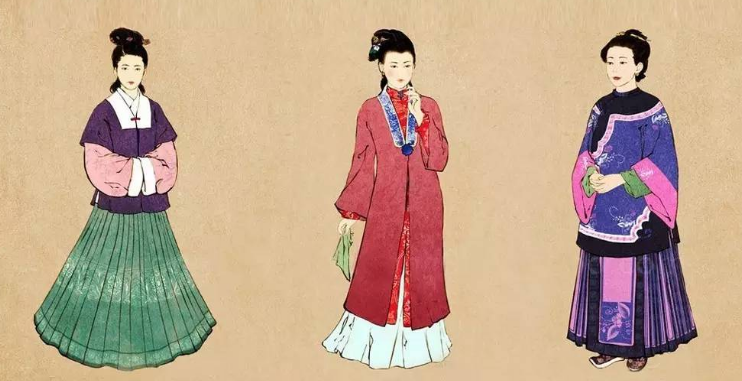
Symbolism in Traditional Chinese Garb
Traditional Chinese clothing is rich in symbolism, with colors, patterns, and motifs carrying profound cultural and societal significance.
Colors (颜色)
- Red (红色): Symbolizes happiness, joy, and good fortune. It is commonly worn at weddings and during the Chinese New Year.
- Gold (金色): Represents wealth and prosperity, often seen in ceremonial and festive attire.
- Black (黑色): Signifies solemnity and is typically worn at funerals and for mourning.
- Blue (蓝色): Associated with immortality and advancement, often seen in academic robes.
Patterns (图案)
- Dragon (龙): The dragon is a symbol of power, strength, and good luck. Dragon patterns are commonly found on imperial robes.
- Phoenix (凤凰): Represents femininity, grace, and virtue. It is often featured on women’s clothing.
- Cloud (云): Cloud patterns symbolize luck, opportunity, and a bright future. They are commonly used in festive garments.
Motifs (图案元素)
- Peony (牡丹花): A symbol of prosperity, honor, and wealth. The peony motif is popular in women’s clothing.
- Lotus (莲花): Signifies purity, enlightenment, and rebirth. Lotus patterns are often seen in Buddhist robes.
- Fu (福): The Chinese character for “fu” means good fortune and happiness. It is frequently used as a decorative motif.
Cultural and Societal Significance (文化与社会意义)
- Role in Festivals: Traditional clothing plays a significant role in various Chinese festivals, helping to create a festive atmosphere and express cultural values.
- Weddings: Red is the predominant color in traditional Chinese wedding attire, symbolizing love and happiness.
- Funerals: Black or white garments are worn as a sign of respect for the deceased and to convey mourning.
- Rituals and Ceremonies: Specific garments are worn during important rituals and ceremonies, preserving cultural traditions.
- Regional Variations: Different regions in China may have their own symbolic colors and patterns in traditional attire, reflecting local customs and beliefs.
Advantages and Limitations (优点与局限性)
- Advantages: The symbolism in traditional Chinese clothing helps convey cultural values, celebrate traditions, and mark significant life events.
- Limitations: Some individuals may find the strict color and pattern conventions limiting in terms of personal expression.
In summary, the symbolism in traditional Chinese clothing is deeply ingrained in the culture and society of China. The choice of colors, patterns, and motifs carries significant meaning, allowing individuals to convey their values, beliefs, and emotions through their attire.
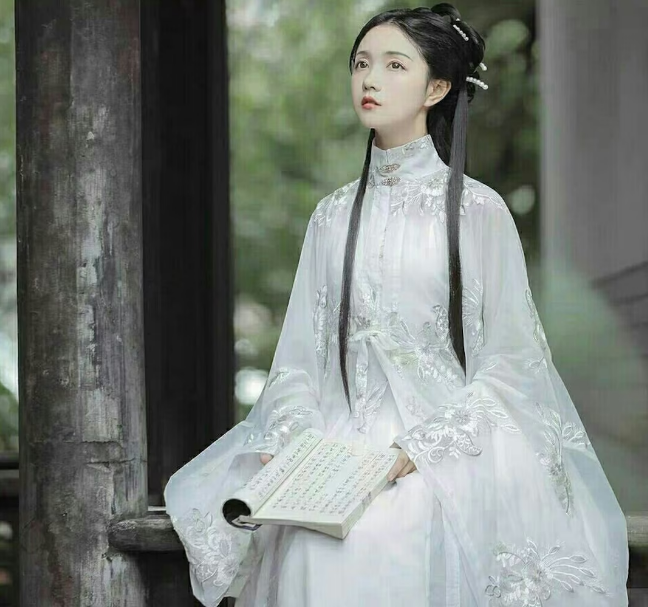
Materials and Craftsmanship
Traditional Chinese clothing is renowned for its exquisite materials and craftsmanship. Let’s explore the key components of this artistry.
Materials Used (所使用的材料)
- Silk (丝绸): Silk is the most revered fabric in Chinese clothing. It is known for its luxurious feel and lustrous appearance. Traditional Chinese silk comes in various types, including mulberry silk and wild silk.
- Cotton (棉花): Cotton is a breathable and comfortable fabric used in everyday attire. It’s especially popular in regions with hot climates.
- Brocade (锦缎): Brocade fabrics are woven with intricate patterns and metallic threads. They are often used for ceremonial and festive attire.
- Embroidery (刺绣): Embroidery is a decorative technique where intricate patterns are stitched onto the fabric. It adds a touch of elegance to traditional garments.
Traditional Craftsmanship and Techniques (传统工艺和技术)
- Hand Embroidery (手工刺绣): Skilled artisans create intricate patterns by hand, showcasing their craftsmanship.
- Dyeing (染色): Traditional dyeing methods involve using natural dyes like indigo or plant-based dyes to create vibrant and lasting colors.
- Weaving (织造): Traditional looms are used to weave silk and other fabrics with precision and attention to detail.
- Tailoring (裁缝): Skilled tailors meticulously cut, sew, and assemble garments, ensuring a perfect fit.
Quality and Durability (质量与耐久性)
- Traditional Chinese clothing is known for its high quality and durability, with carefully chosen materials and meticulous craftsmanship ensuring that these garments can last for many years.
Advantages and Limitations (优点与局限性)
- Advantages: The use of premium materials and traditional craftsmanship results in clothing of exceptional beauty, comfort, and cultural significance.
- Limitations: Handcrafted traditional Chinese clothing can be time-consuming and expensive due to the skilled labor involved, making it less accessible to some individuals.
In summary, the materials and craftsmanship behind traditional Chinese clothing are a testament to the rich heritage and dedication to excellence in Chinese culture. The use of silk, cotton, brocade, and intricate techniques like embroidery and handcrafting contribute to the enduring allure of these garments.
Regional Variations in Chinese Dress
Traditional Chinese attire exhibits significant regional variations influenced by geography, climate, and cultural diversity. Let’s explore these differences in detail.
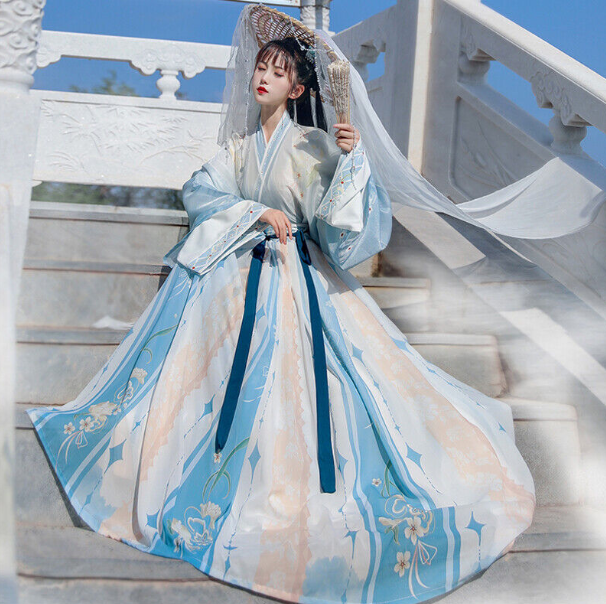
Northern China (华北地区)
- Climate Influence: Northern China experiences harsh winters, leading to the preference for warm, layered clothing.
- Styles: Hanfu with heavy, quilted layers and high collars is common, along with fur-lined hats and boots.
- Materials: Wool and thicker fabrics are used to combat cold temperatures.
- Northern China on Wikipedia
Southern China (华南地区)
- Climate Influence: The subtropical climate of Southern China calls for lightweight and breathable attire.
- Styles: Qipao and lightweight, loose-fitting garments are popular due to their comfort in hot and humid weather.
- Materials: Cotton and silk are frequently used for their breathability.
- Southern China on Wikipedia
Western China (西部地区)
- Geographic Diversity: Western China is vast and geographically diverse, influencing regional dress.
- Styles: Nomadic and ethnic clothing like Tibetan robes and Uighur attire reflect the cultural diversity.
- Materials: Thick, warm fabrics like yak wool are used in colder regions.
- Western China on Wikipedia
Eastern China (华东地区)
- Cultural Significance: Eastern China is known for its ancient cultural centers and bustling cities.
- Styles: Qipao is prevalent, showcasing a blend of tradition and modernity.
- Materials: High-quality silks and embroidered patterns are characteristic.
- Eastern China on Wikipedia
Advantages and Limitations (优点与局限性)
- Advantages: Regional variations allow for adaptability to local climates and cultural expression.
- Limitations: These variations can sometimes make it challenging to create a unified national identity through clothing.
In summary, regional variations in traditional Chinese attire reflect the country’s vast and diverse landscape, climate, and cultural heritage. These differences not only showcase the adaptability of Chinese clothing but also celebrate the rich tapestry of Chinese culture.
Modern Influence and Revival
Traditional Chinese clothing has left a lasting mark on contemporary fashion and has experienced a notable revival. Let’s explore how it has influenced modern fashion and the resurgence of traditional styles.
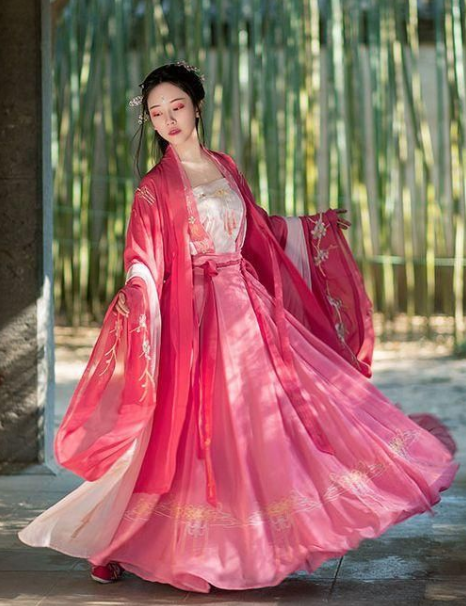
Influence on Contemporary Fashion (对现代时尚的影响)
- Fashion Designers: Many designers draw inspiration from traditional Chinese clothing, incorporating elements like mandarin collars, embroidery, and qipao silhouettes into their collections.
- Runway Shows: Traditional Chinese attire has been featured on international runways, showcasing its versatility and appeal in the global fashion scene.
- Cultural Fusion: Fusion fashion blends traditional Chinese elements with modern designs, creating a unique and trendy look.
- Contemporary fashion on Wikipedia
Resurgence of Traditional Styles (传统风格的复兴)
- Hanfu Revival: The Hanfu revival movement in China has gained momentum, with young people embracing this ancient attire as a form of cultural expression. Sales of Hanfu have surged, with the market estimated to be worth over ¥1 billion (approximately $157 million USD) in 2021.
- Online Communities: Online communities and social media have played a significant role in promoting traditional clothing, connecting enthusiasts, and sharing styling tips.
- Cultural Events: Traditional clothing is now commonly worn at cultural events, weddings, and festivals, contributing to the revival of these styles.
- Hanfu revival on Wikipedia
Advantages and Limitations (优点与局限性)
- Advantages: The revival of traditional Chinese clothing preserves cultural heritage, fosters a sense of identity, and boosts the fashion industry.
- Limitations: The revival movement can sometimes be criticized for promoting an idealized version of the past and may not be fully accessible to everyone due to its cost and formality.
In summary, traditional Chinese clothing has made a significant impact on modern fashion, inspiring designers and captivating a global audience. The revival of traditional styles not only celebrates cultural heritage but also offers individuals a unique way to express themselves through clothing.







